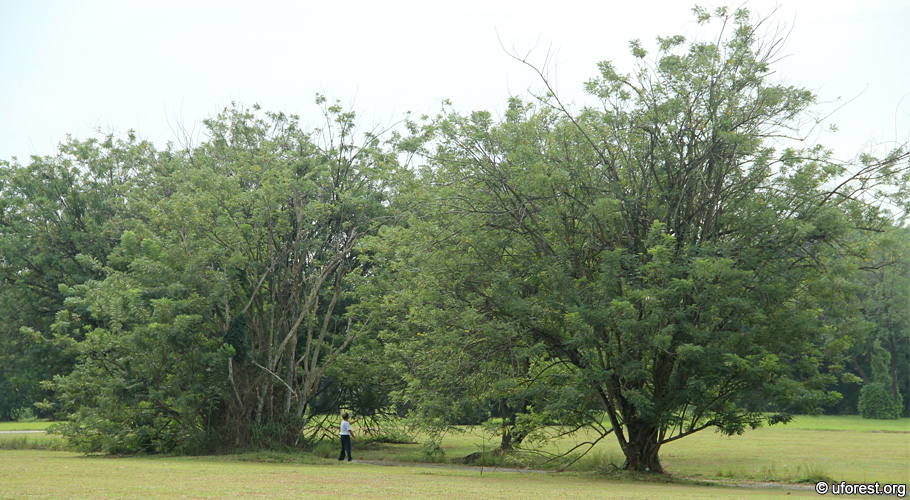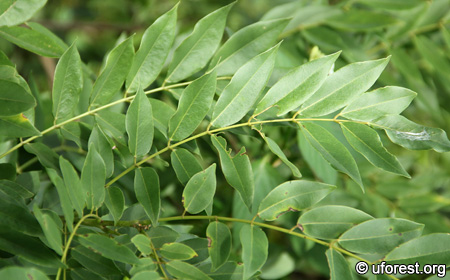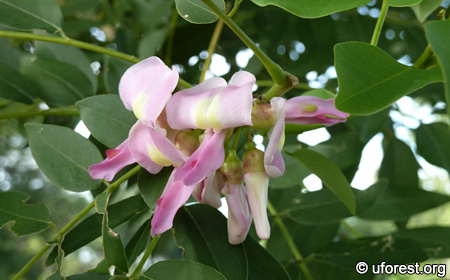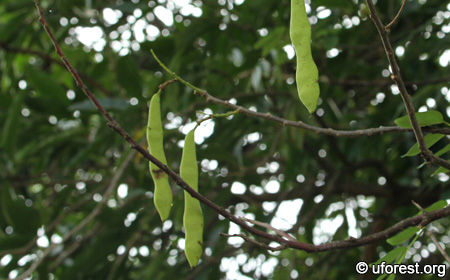Gliricidia sepium (Jacq.) Kunth
| Etymology | Genus | Dormouse killer; referring to the seeds and bark used to poison rodents |
|---|---|---|
| Species | Hedge; referring to it being planted for such purpose | |
| Family | Fabaceae | |
| Synonyms | Galedupa pungam Blanco, Gliricidia lambii Fernald, Gliricidia maculata (Kunth) Walp. | |
| Common Names | Mexican Lilac | |
| Status | Exotic: Casual | |
| Form | Tree | |
| Native Distribution | Central America | |
Diagnostics:
Gliricidia sepium is a cultivated tree sparingly planted along our roads and parks. The natural form has voluminous and straggling foliage while cultivated ones here normally have their lower branches pruned, resulting in a dense cluster of upward pointing branches. The pinnate leaves are arranged spirally, giving a bushy appearance. Each leaflet is elliptic with pointed tips and a pale green underside. The inflorescences are pink.
Interesting Facts:
The Mexican Lilac was first brought to Philippines by the Spanish in the early 1600s and subsequently to Sri Lanka in the 18th century; and from there to other parts of Asia (World Agroforestry Centre). It used to be a common roadside tree in Singapore, but its popularity has since waned (NParks, 2009).
The natural forms of the Mexican Lilac at Bidadari Cemetery.

Compound leaf.

Leaflets, note the pale green underside.

Pink inflorescence.

Flatten pods.
References
NParks. (2009) Trees of Our Garden City: A Guide to the Common Trees of Singapore. 2nd Edition. National Parks Board, Singapore. 382 pp.World Agroforestry Centre. AgroForestry Tree Database: A tree species reference and selection guide. http://www.worldagroforestrycentre.org. Accessed on 24-Jan-2014.
Author: Siyang
Posted: 2014-01-24 / Modified: 2017-12-25
Google Ads